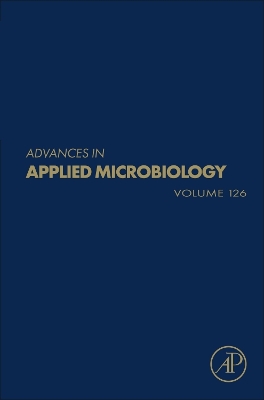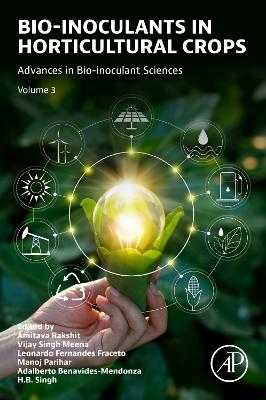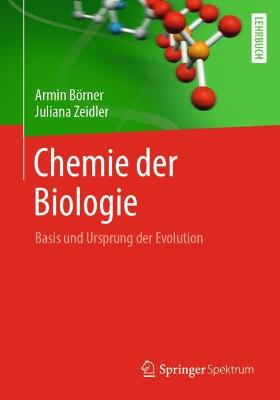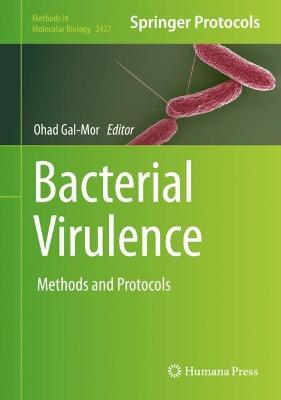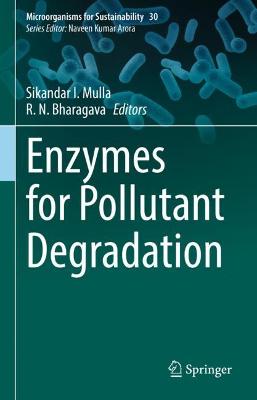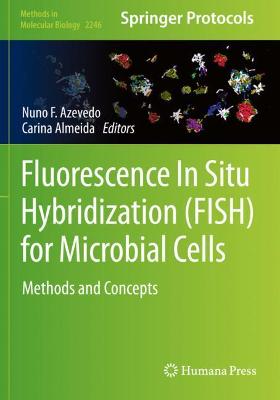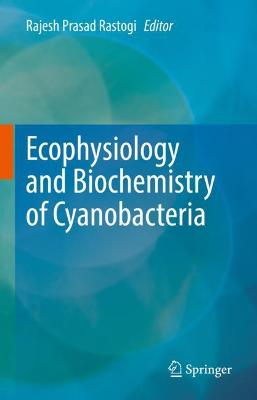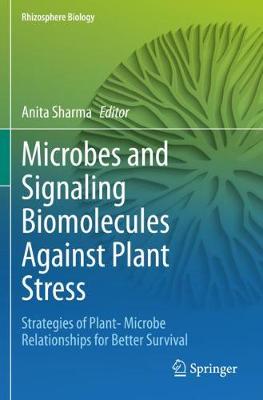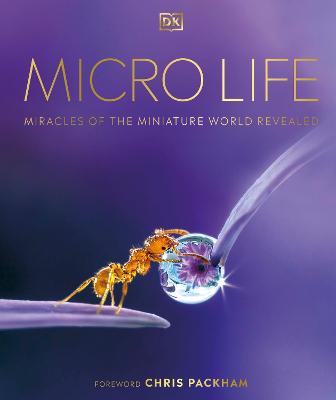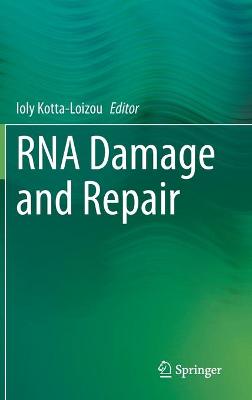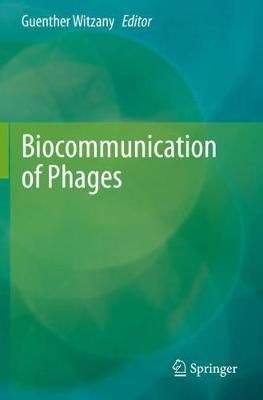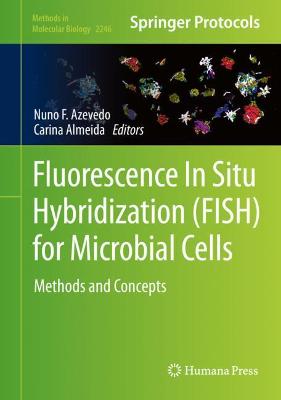Cell Cycle Regulation and Development in Alphaproteobacteria
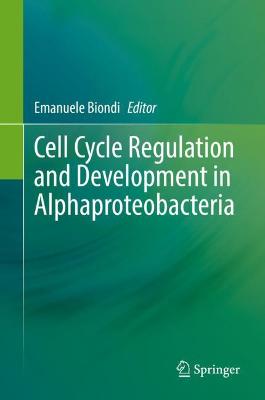 portes grátis
portes grátis
Cell Cycle Regulation and Development in Alphaproteobacteria
Biondi, Emanuele
Springer Nature Switzerland AG
03/2022
301
Dura
Inglês
9783030906207
15 a 20 dias
635
Preface
Chapter 1: Towards a Comparative Systems Biology of the Alphaproteobacterial Cell Cycle
Abstract Introduction Comparative genomics of the cell cycle Cell cycle involvement of sncRNAs Towards Comparative Systems Biology of the Cell Cycle Conclusions Bibliography
Chapter 2: Temporal control of promoter activity during the Caulobacter cell cycle.
Early S-phase transcriptional control - DnaA, and its targets - Regulation of DnaA - GcrA, and its targets - Regulation of GcrA Late S-phase transcriptional program - CtrA, and its targets - Regulation of CtrA - Negative regulation by the ancestral virulence regulators, MucR1/2 The G1 phase transcriptional program - CtrA, and its target - Negative regulation of the S-phase promoters by the small CtrA inhibitory protein SciP - TacA, and its targets Transcriptional cascades in cell cycle regulated functional modules - Transcriptional control of flagellar biogenesis - Chemotaxis machinery biogenesis transcriptional control - Pili biogenesis transcriptional control - Transcriptional control of the divisome - Transcriptional control of capsulation - Transcriptional control of holdfast formation and stalk biogenesis Transcriptional reprogramming in response to changing environmental conditions - Alternative Sigma factors and stationary phase regulators - (p)ppGpp - Small regulatory RNAs
Chapter 3: Cell cycle signal transduction and proteolysis in Caulobacter
Abstract Introduction - The two-component signaling paradigm - Cyclic-di-GMP-dependent signaling Two core phosphorylation pathways regulate the Caulobacter cell cycle and development Non-canonical interactions between the DivJ-PleC-DivK and CckA-ChpT-CtrA pathways control polarity and development cdG signaling regulates the Caulobacter cell cycle and polar development - The cell cycle signaling network both generates and is modulated by cdG oscillations - cdG signaling is required for polar morphogenesis Spatial regulation of CckA activity Proteolytic regulation of the Caulobacter cell cycle - AAA+ proteases and adaptor-mediated proteolysis - Cell cycle regulation of CtrA proteolysis - Regulated proteolysis of proteins that modulate CtrA activity - Proteolysis of substrates that regulate DNA replication and methylation - Degradation of proteins involved in cell division Nutrient cues affecting the Caulobacter cell cycle - (p)ppGpp is produced in response to starvation in E. coli - (p)ppGpp is a key mediator of Caulobacter starvation responses - Linkages between ammonium deprivation and (p)ppGpp synthesis - Effects of (p)ppGpp in Caulobacter Oscillations in cellular redox status and their effects - Redox-sensitive NstA regulates topoisomerase IV - NADH-producing and NADH-binding proteins regulate Z-ring assembly Outlook
Chapter 4: Cell division in Caulobacter crescentus: A molecular-scale model
An overview of division Z-ring composition, structure, and dynamics - FtsZ: The building block of the Z-ring - Z-ring structure and dynamics - Open Questions Building the Z-ring: Spatiotemporal regulation of Z-ring formation - Cell cycle control of FtsZ protein levels - Z-ring site selection - Cell cycle control of FtsZ self-interaction: A putative model - Focusing the Z-ring - Attachment of the Z-ring to the membrane - Open Questions The Z-ring: A scaffold for the rest of the divisome - Open Questions Divisome-associated elongation - Open Questions Constriction: A PG synthesis-driven process - Force generation through PG synthesis - Constriction-specific PG synthesis machinery - FtsZ-mediated PG synthase localization and activation - Stress response-mediated constriction regulation - Downstream PG synthase activation pathways - Open Questions Envelope maintenance - Open Questions Cell separation, polar organization, and the final events of division - Cell separation - Recruitment of polarity determining factors - Z-ring disassembly and MreB dispersal - Cell pole shape determination - Open Questions Conclusions and Outlook
Chapter 5: Chromosome segregation in Alphaproteobacteria
Abstract Overview of chromosome segregation Broad conservation of the ParABS centromere translocation system Centromeres are defined by parS nucleotide sequences ParB assembles into a complex superstructure at the parS region The ParA ATPase is essential for chromosome segregation ParA dynamics and ATP-cycling drive centromere translocation Chromosome segregation is under control of polar guidance cues Segregation activities outside of ParABS SMC/condensin and Topologically Associated Domains Potential roles for other nucleoid-associated proteins Partitioning Origin-distal DNA Concluding remark
Chapter 6: Modeling the Cell Cycle of Caulobacter crescentus
INTRODUCTION CELL CYCLE MODELS: ODE'S AND NONLINEAR DYNAMICS `SMALL' MODELS OF THE CELL CYCLE DYNAMICS OF CAULOBACTER CRESCENTUS - Model 1: Brazhnik & Tyson - Model 2: Murray et al. - Model 3: Vandecan, Biondi & Blossey `LARGE' MODELS OF CAULOBACTER'S CELL CYCLE CONCLUSIONS
Chapter 7: Diversity of Growth Patterns in the Alphaproteobacteria
Abstract Introduction - Ecological Diversity of Alphaproteobacteria - Methods to Visualize Bacterial Growth Patterning - Growth Patterns During Elongation - Growth Patterns During Division Growth Patterns of Budding Bacteria in the Rhizobiales - Growth Patterns of Prosthecate Tip Budding Bacteria - Growth Patterns of Prosthecate Cell Budding Bacteria - Unipolar Elongation of Rod-shaped Bacteria Diverse growth patterns of stalked bacteria in the Caulobacterales - Stalked budding bacteria within the Caulobacterales - Caulobacterales with non-reproductive stalks Cell growth in the Rhodospirillales Cell growth in the Rhodobacterales Cell Growth in Rickettsiales Conservation of core elongation machinery in the Alphaproteobacteria - Survey of peptidoglycan biosynthesis machinery - Regulation of peptidoglycan biosynthesis machinery Concluding Remarks Acknowledgements Chapter 8: Cell cycle and terminal differentiation in Sinorhizobium meliloti
Abstract Sinorhizobium meliloti biology Symbiotic infection and differentiation The NCR peptides, host effectors of bacteroid differentiation The cell cycle in Sinorhizobium meliloti Cell cycle regulation in Sinorhizobium meliloti - The conserved architecture of the master cell cycle regulatory circuit - CtrA: evolution from control of motility to a cell cycle regulator - The CtrA regulatory circuit: multiple levels of regulation of CtrA Symbiosis and the S. meliloti cell cycle Benefits of terminal bacteroid differentiation Conclusions Acknowledgments/Funding
Chapter 9: Integration of the cell cycle and development in Agrobacterium tumefaciens
Abstract Introduction Global regulation of cell cycle progression: Intro to DNA replication/modification/gene regulation - Chromosomal replication initiator protein, AAA+ protein DnaA (Atu0324) - Cell cycle-regulated methyltransferase CcrM (Atu0794) - Small CtrA inhibitory protein SciP (Atu2430) - Cell cycle regulator GcrA Introduction to phosphorylation, two-component systems, and phosphorelays - The PdhS-DivK-CtrA pathway in Agrobacterium tumefaciens Phosphorelay 1: DivJ/PleC/PdhS-DivK/PleD and Associated Proteins - Sensor histidine kinases DivJ (Atu0921) and PleC (Atu0982) - PleC/DivJ homolog sensor kinases PdhS1 (Atu0614) and PdhS2 (Atu1888) - Single domain response regulator, cell division protein DivK (Atu1296) and Diguanylate cyclase PleD/Cellulose regulator CelR (Atu1297) Phosphorelay 2: CckA-ChpT-CpdR/CtrA - Cell cycle kinase CckA (Atu1362) - Pseudokinase DivL (Atu0027) - Cell cycle histidine phosphotransferase ChpT (Atu2438) - Cell cycle transcriptional regulator CtrA (Atu2434) - Cell cycle response regulators CpdR1 (Atu3883) and CpdR2 (Atu3603) Proteolysis - Caseinolytic proteases ClpA (Atu1364), ClpP1 (Atu1258), ClpP2 (Atu2270), ClpP3 (Atu1627), ClpS1 (Atu1363), ClpS2 (Atu2232), and ClpX (Atu1259) - Regulator of CtrA degradation (Atu3742) - ATP-dependent serine peptidase Lon Protease (Atu1261) Asymmetrical Cellular Division and Polar Differentiation in Agrobacterium - Polar organelle development protein PodJ (Atu0499) - Pole organizing protein PopZ (Atu1720) Additional regulators of developmental phenotypes - Secondary messenger cyclic diguanylate monophosphate - Effect of c-di-GMP on biofilm and motility - Diguanylate cyclases DgcA (Atu1257), DgcB (Atu1691), DgcC (Atu2179), and DcpA (Atu3495) - Rough outer surface repressor, Ros (Atu0916) Environmental effects on cell cycle regulation phenotypes and virulence - Temperature - Effects of light on A. tumefaciens - The role of oxygen: Aerobic vs. anaerobic conditions - - The role of polyamines on growth, biofilm formation, and virulence - Ions: Iron, Manganese, and Phosphate - Response to plant generated compounds Conclusion Acknowledgements
Chapter 10: Brucella abortus, a pathogenic Rhizobiale with a complex cell cycle
The genome of Brucella Brucella are intracellular pathogens Brucella are Rhizobiales - Features of Brucella envelope - General stress response - Unipolar growth - Asymmetric division and polarity Cell cycle regulation in Brucella - The cell cycle is linked to the virulence - The CtrA regulation pathway - CtrA targets in B. abortus - GcrA function in B. abortus - CtrA is not crucial for intracellular trafficking and G1 arrest in endosomal compartments
Preface
Chapter 1: Towards a Comparative Systems Biology of the Alphaproteobacterial Cell Cycle
Abstract Introduction Comparative genomics of the cell cycle Cell cycle involvement of sncRNAs Towards Comparative Systems Biology of the Cell Cycle Conclusions Bibliography
Chapter 2: Temporal control of promoter activity during the Caulobacter cell cycle.
Early S-phase transcriptional control - DnaA, and its targets - Regulation of DnaA - GcrA, and its targets - Regulation of GcrA Late S-phase transcriptional program - CtrA, and its targets - Regulation of CtrA - Negative regulation by the ancestral virulence regulators, MucR1/2 The G1 phase transcriptional program - CtrA, and its target - Negative regulation of the S-phase promoters by the small CtrA inhibitory protein SciP - TacA, and its targets Transcriptional cascades in cell cycle regulated functional modules - Transcriptional control of flagellar biogenesis - Chemotaxis machinery biogenesis transcriptional control - Pili biogenesis transcriptional control - Transcriptional control of the divisome - Transcriptional control of capsulation - Transcriptional control of holdfast formation and stalk biogenesis Transcriptional reprogramming in response to changing environmental conditions - Alternative Sigma factors and stationary phase regulators - (p)ppGpp - Small regulatory RNAs
Chapter 3: Cell cycle signal transduction and proteolysis in Caulobacter
Abstract Introduction - The two-component signaling paradigm - Cyclic-di-GMP-dependent signaling Two core phosphorylation pathways regulate the Caulobacter cell cycle and development Non-canonical interactions between the DivJ-PleC-DivK and CckA-ChpT-CtrA pathways control polarity and development cdG signaling regulates the Caulobacter cell cycle and polar development - The cell cycle signaling network both generates and is modulated by cdG oscillations - cdG signaling is required for polar morphogenesis Spatial regulation of CckA activity Proteolytic regulation of the Caulobacter cell cycle - AAA+ proteases and adaptor-mediated proteolysis - Cell cycle regulation of CtrA proteolysis - Regulated proteolysis of proteins that modulate CtrA activity - Proteolysis of substrates that regulate DNA replication and methylation - Degradation of proteins involved in cell division Nutrient cues affecting the Caulobacter cell cycle - (p)ppGpp is produced in response to starvation in E. coli - (p)ppGpp is a key mediator of Caulobacter starvation responses - Linkages between ammonium deprivation and (p)ppGpp synthesis - Effects of (p)ppGpp in Caulobacter Oscillations in cellular redox status and their effects - Redox-sensitive NstA regulates topoisomerase IV - NADH-producing and NADH-binding proteins regulate Z-ring assembly Outlook
Chapter 4: Cell division in Caulobacter crescentus: A molecular-scale model
An overview of division Z-ring composition, structure, and dynamics - FtsZ: The building block of the Z-ring - Z-ring structure and dynamics - Open Questions Building the Z-ring: Spatiotemporal regulation of Z-ring formation - Cell cycle control of FtsZ protein levels - Z-ring site selection - Cell cycle control of FtsZ self-interaction: A putative model - Focusing the Z-ring - Attachment of the Z-ring to the membrane - Open Questions The Z-ring: A scaffold for the rest of the divisome - Open Questions Divisome-associated elongation - Open Questions Constriction: A PG synthesis-driven process - Force generation through PG synthesis - Constriction-specific PG synthesis machinery - FtsZ-mediated PG synthase localization and activation - Stress response-mediated constriction regulation - Downstream PG synthase activation pathways - Open Questions Envelope maintenance - Open Questions Cell separation, polar organization, and the final events of division - Cell separation - Recruitment of polarity determining factors - Z-ring disassembly and MreB dispersal - Cell pole shape determination - Open Questions Conclusions and Outlook
Chapter 5: Chromosome segregation in Alphaproteobacteria
Abstract Overview of chromosome segregation Broad conservation of the ParABS centromere translocation system Centromeres are defined by parS nucleotide sequences ParB assembles into a complex superstructure at the parS region The ParA ATPase is essential for chromosome segregation ParA dynamics and ATP-cycling drive centromere translocation Chromosome segregation is under control of polar guidance cues Segregation activities outside of ParABS SMC/condensin and Topologically Associated Domains Potential roles for other nucleoid-associated proteins Partitioning Origin-distal DNA Concluding remark
Chapter 6: Modeling the Cell Cycle of Caulobacter crescentus
INTRODUCTION CELL CYCLE MODELS: ODE'S AND NONLINEAR DYNAMICS `SMALL' MODELS OF THE CELL CYCLE DYNAMICS OF CAULOBACTER CRESCENTUS - Model 1: Brazhnik & Tyson - Model 2: Murray et al. - Model 3: Vandecan, Biondi & Blossey `LARGE' MODELS OF CAULOBACTER'S CELL CYCLE CONCLUSIONS
Chapter 7: Diversity of Growth Patterns in the Alphaproteobacteria
Abstract Introduction - Ecological Diversity of Alphaproteobacteria - Methods to Visualize Bacterial Growth Patterning - Growth Patterns During Elongation - Growth Patterns During Division Growth Patterns of Budding Bacteria in the Rhizobiales - Growth Patterns of Prosthecate Tip Budding Bacteria - Growth Patterns of Prosthecate Cell Budding Bacteria - Unipolar Elongation of Rod-shaped Bacteria Diverse growth patterns of stalked bacteria in the Caulobacterales - Stalked budding bacteria within the Caulobacterales - Caulobacterales with non-reproductive stalks Cell growth in the Rhodospirillales Cell growth in the Rhodobacterales Cell Growth in Rickettsiales Conservation of core elongation machinery in the Alphaproteobacteria - Survey of peptidoglycan biosynthesis machinery - Regulation of peptidoglycan biosynthesis machinery Concluding Remarks Acknowledgements Chapter 8: Cell cycle and terminal differentiation in Sinorhizobium meliloti
Abstract Sinorhizobium meliloti biology Symbiotic infection and differentiation The NCR peptides, host effectors of bacteroid differentiation The cell cycle in Sinorhizobium meliloti Cell cycle regulation in Sinorhizobium meliloti - The conserved architecture of the master cell cycle regulatory circuit - CtrA: evolution from control of motility to a cell cycle regulator - The CtrA regulatory circuit: multiple levels of regulation of CtrA Symbiosis and the S. meliloti cell cycle Benefits of terminal bacteroid differentiation Conclusions Acknowledgments/Funding
Chapter 9: Integration of the cell cycle and development in Agrobacterium tumefaciens
Abstract Introduction Global regulation of cell cycle progression: Intro to DNA replication/modification/gene regulation - Chromosomal replication initiator protein, AAA+ protein DnaA (Atu0324) - Cell cycle-regulated methyltransferase CcrM (Atu0794) - Small CtrA inhibitory protein SciP (Atu2430) - Cell cycle regulator GcrA Introduction to phosphorylation, two-component systems, and phosphorelays - The PdhS-DivK-CtrA pathway in Agrobacterium tumefaciens Phosphorelay 1: DivJ/PleC/PdhS-DivK/PleD and Associated Proteins - Sensor histidine kinases DivJ (Atu0921) and PleC (Atu0982) - PleC/DivJ homolog sensor kinases PdhS1 (Atu0614) and PdhS2 (Atu1888) - Single domain response regulator, cell division protein DivK (Atu1296) and Diguanylate cyclase PleD/Cellulose regulator CelR (Atu1297) Phosphorelay 2: CckA-ChpT-CpdR/CtrA - Cell cycle kinase CckA (Atu1362) - Pseudokinase DivL (Atu0027) - Cell cycle histidine phosphotransferase ChpT (Atu2438) - Cell cycle transcriptional regulator CtrA (Atu2434) - Cell cycle response regulators CpdR1 (Atu3883) and CpdR2 (Atu3603) Proteolysis - Caseinolytic proteases ClpA (Atu1364), ClpP1 (Atu1258), ClpP2 (Atu2270), ClpP3 (Atu1627), ClpS1 (Atu1363), ClpS2 (Atu2232), and ClpX (Atu1259) - Regulator of CtrA degradation (Atu3742) - ATP-dependent serine peptidase Lon Protease (Atu1261) Asymmetrical Cellular Division and Polar Differentiation in Agrobacterium - Polar organelle development protein PodJ (Atu0499) - Pole organizing protein PopZ (Atu1720) Additional regulators of developmental phenotypes - Secondary messenger cyclic diguanylate monophosphate - Effect of c-di-GMP on biofilm and motility - Diguanylate cyclases DgcA (Atu1257), DgcB (Atu1691), DgcC (Atu2179), and DcpA (Atu3495) - Rough outer surface repressor, Ros (Atu0916) Environmental effects on cell cycle regulation phenotypes and virulence - Temperature - Effects of light on A. tumefaciens - The role of oxygen: Aerobic vs. anaerobic conditions - - The role of polyamines on growth, biofilm formation, and virulence - Ions: Iron, Manganese, and Phosphate - Response to plant generated compounds Conclusion Acknowledgements
Chapter 10: Brucella abortus, a pathogenic Rhizobiale with a complex cell cycle
The genome of Brucella Brucella are intracellular pathogens Brucella are Rhizobiales - Features of Brucella envelope - General stress response - Unipolar growth - Asymmetric division and polarity Cell cycle regulation in Brucella - The cell cycle is linked to the virulence - The CtrA regulation pathway - CtrA targets in B. abortus - GcrA function in B. abortus - CtrA is not crucial for intracellular trafficking and G1 arrest in endosomal compartments

